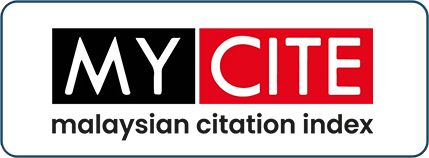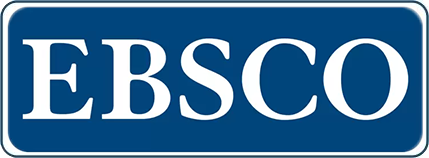Halal Industry: Are The Businesses Fully Awake?
DOI:
https://doi.org/10.33102/jfatwa.vol16no1.216Keywords:
Halal business, success factors, operations, halal governanceAbstract
Nowadays, organisations are involved in intense competition to sell their products and services globally. The current target market covers nearly every country in the world, including Islamic countries. For example, Japan and Australia are putting great effort into catering to a rising number of Muslim clients by increasing their investment and expertise in halal products and services. Their aim is to attract the attention of the growing Muslim population to add a billion by 2050. Halal products include food and beverages, personal care, cosmetics, pharmaceuticals and health products. Meanwhile, halal services comprise areas such as Islamic finance, takaful, travel, education and healthcare. Subsectors such as media, consulting, events, online services, software development, logical services and lab testing can also benefit from the growth of the halal sector as a whole. The authors will attempt to achieve two objectives in this paper: (i) to examine current literature and (ii) to determine the success factors of and issues faced by halal businesses. The Malaysian government’s intention is not only to support the halal industry in terms of complying with regulations set by the authorities and obtaining the relevant certification; the output must also meet international standards to supply consistently high-quality products and services to win customers’ hearts.
Downloads
References
Abdul Talib, M.S. and Abdul Hamid, A.B. (2014). Halal logistics in Malaysia: A SWOT analysis. Journal of Islamic Marketing, vol.5 no.3 pp.322 – 343.
Abdul Talib, H. and Mohd. Ali, K.A. (2009). An Overview of Malaysian Food Industry: The Opportunity and Quality Aspects. Pakistan Journal of Nutrition, vol.8 pp.507-517.
Evans, A. (2004). Brand New Paradigm. The Halal Journal. Special Issue 2004. p.11.
Abdul Majid, M.A., Zainal Abidin, I.H., Mohd Abd Majid, H.A. and Tamby Chik, C. (2015). Issues of Halal Food Implementation in Malaysia. Journal of Application Environment Biological Sciences, vol.5 no.6S pp.50-56.
Abdul, M., Ismail, H., Hashim, H., and Johari, J. (2009). SMEs and halal certification. China-USA Business Review, vol.8 no.4 pp.22-29.
Adams, I.A. (2011). Globalization: Explaining the dynamics and challenges of the halal food surge. Intellectual Discourse, vol.19 no.1 pp.123-145.
Ahasanul Haque, Abdullah Sarwar, Farzana Yasmin, Arun Kumar Tarofder and Mirza Ahsanul Hossain, (2015). Non-Muslim consumers’ perception toward purchasing halal food products in Malaysia. Journal of Islamic Marketing, vol.6 Iss.1 pp.133-147.
Ahmed, A., Ahmed, N. and Salman, A. (2005). Critical issues in packaged food business. British Food Journal, vol.107 Iss:10 pp.760–780.
Alam, S.S. and Sayuti, N.M. (2011). Applying the Theory of Planned Behavior (TPB) in Halal Food Purchasing. International. Journal of Commerce and Management, vol.21 no.1 pp.8-20.
Ambali, A.R. and Bakar, A. N. (2013). Ḥalāl food and products in Malaysia: People’s and policy implications. Intellectual Discourse, vol.21 no.1 pp.7-32.
Awan, H.M., Siddiquei, A.N. and Haider, Z. (2015). Factors affecting Halal purchase intention – evidence from Pakistan’s Halal food sector. Management Research Review, vol.38 Iss. 6 pp.640–660.
Aziz, Y. A. and Chok, N. V. (2013). The role of halal awareness, halal certification, and marketing components in determining halal purchase intention among non-muslims in Malaysia: A Structural Equation Modeling Approach. Journal of International Food & Agribusiness Marketing, vol.25 no.1 pp.1-23.
Badruldin, B. Mohamed, Z., Sharifuddin, J., Rezai, G., Abdullah, A.M., Abd Latif, I. and Mohayidin, M.G.(2012). Clients; perception towards JAKIM service quality in Halal certification. Journal of Islamic Marketing, vol.3 no.1 pp.59–71.
Bahrudin, S.S.M., Illyas, M.I., & Desa, M. I. (2011). Tracking and tracing technology for halal product integrity over the supply chain. In 2011 International Conference on Electrical Engineering and Informatics (ICEEI). pp.1-7
Bonne, K. and Verbeke, W. (2008). Muslim consumer trust in halal meat status and control in Belgium. Meat science, vol.79 no.1 pp.113-123.
Bonne, K., Vermeir, I., Bergeaud-Blackler, F. and Verbeke, W. (2007). Determinants of Halal meat consumption in France. British Food Journal, vol.109 no.5 pp.367-386.
Bowersox. Donald J., Closs, David J. and Cooper, M. Bixby. (2006). Supply Chain Logistics Management (2nd ed.). Boston: McGraw-Hill Irwin.
Brewer, P.C. and T.W. Speh (2000). Using the Balanced Scorecard to Measure Supply Chain Performance. Journal of Business Logistic, vol.21 no.1 pp.75-93.
David, F. R. (2011). Strategic Management: Concepts and Cases. Singapore: Pearson.
Foster, T. A. (2006). World's best-run supply chains stay on top regardless of the competition. Global Logistics & Supply Chain Strategies, vol. February pp. 2760.
Global Leader. (2008). World population prospects the Islamic bombs. Retrieved November 17th, 2009, from http://www.freeworldacademy.com/globalleader/population.htm
Goh, M., and Pinaikul, P. (1998). Logistics management practices and development in Thailand. Logistics Information Management, vol.11 no.6 pp.359-369.
Gunasekaran, A. and Ngai, E.W.T. (2003). The successful management of a small logistics company. International Journal of Physical Distribution & Logistics Management, vol.33 no.9 pp.825-842.
Habibah, C.H. (2011). The confidence level of purchasing product with halal logo among consumers. Dissertation for Masters. Universiti Utara Malaysia.
Halim, M.A.A. and Ahmad, A.A. (2014). Enforcement of consumer protection laws on halal products: Malaysian experience. Asian Social Sciences, vol.10 no.3 pp.9-14.
Hassan, S.H. and Hamdan, H. (2013). Experience of non-Muslim consumers on halal as third party certification mark in Malaysia. Asian Social Sciences, vol.9 no.15 pp.263-271.
Hazen, B.T. and Byrd, T.A. (2012). Toward creating competitive advantage with logistics information technology. International Journal of Physical Distribution & Logistics Management, vol.42 no.1 pp.8-35.
HDC (2010). Halal Guide Book: Guide for Food Procedures. PJ, Selangor, Halal Industry Development Corporation.
Hunter, M. (2014). Entrepreneurship as a means to create Islamic economy. Economics Management and Financial Markets, vol.9 no.1 pp.75-100.
Ireland, J. and Rajabzadeh, S.A. (2011). UAE consumer concerns about halal products. Journal of Islamic Marketing, vol. 2 Iss.3 pp.274 – 283.
Kamaruddin, R. and Jusoff, K. (2009). An ARDL Approach in Food and Beverages Industry Growth Process in Malaysia. International Business Research, vol.2 no.3 pp.98-107.
Kotler. P and Armstrong. G. (2006). Principles of Marketing. 11th Edition. New Jersey. Pearson Education. P. 229.
Malaysia External Trade Development Corporation (MATRADE). 2004. Branding For Export: Q&A. pg.1.
Mazlan, M. (2005). Innovation diffusion and ICT adoption in JAKIM Halal certified company in Klang Valley. Doctoral dissertation, Universiti Teknologi MARA (UiTM).
Ministry of International Trade and Industry (MITI). (2006). Malaysia Third Industrial Master Plan (IMP3) 2006-2020. Kuala Lumpur: Pencetakan Nasional Malaysia Berhad.
Mohamed, Z.A., Ann, H.J., and Yee W.F. (2010). Strategic Management. Selangor: Oxford Fajar
Muhamed, N.A., Ramli, N.M., Aziz, S.A. and Yaakub, N.A. (2014). Integrating Islamic Financing and Halal Industry: A survey on current practices of the selected Malaysian Authority Bodies. Asian Social Sciences, vol.10 no.17 pp.120-126.
Muhammad Ayyub, R. (2015). Exploring perceptions of non-Muslims towards Halal foods in UK. British Food Journal, vol.117 Iss.9 pp.2328 – 2343.
Muhammad, N.M.N., F.M. Isa and B.C. Kifli (2009). Positioning Malaysia as Halal-Hub:Integration Role of Supply Chain Strategy and Halal Assurance System. Asian Social Science, vol.5 no.7 pp.44-52.
Noordin, N., N.L.M. Noor, M. Hashim and Z. Samicho (2009). Value Chain of Halal Certification System: A Case of the Malaysia Halal Industry. In the Proceedings of the 2009 European and Mediterranean Conference on Information System, pp: 1-14.
Othman, P., Sungkar, I. and Sabri Wan Hussin, W. (2009). Malaysia as an International Halal Food Hub: Competitiveness and Potential of Meat-based Industries. Asean Economic Bulletin, vol.26 no.3 pp.306-320.
Othman, R., Ahmad, Z.A. and Zailani, S. (2009). The effect of institutional pressures in the Malaysian halal food industry. International Business Management, vol.3 no.4 pp.80-84.
Peng and Velleng Peng, L. and Vellenga, D. (1993). The government’s role in promoting logistics services in China. Logistics and Transportation Review, vol.29 no.4 pp.301-318.
Piplani, R., Pokharel, S., and Tan, A. (2004). Perspectives on the use of information technology at third party logistics service providers in Singapore. Asia Pacific Journal of Marketing and Logistics, vol.16 no.1 pp.27-41.
Porter. Michael E. (1991). Towards a Dynamic View of Strategy. Strategic Management Journal, vol.12 no.Winter pp.95-117.
Premkumar. G., K. Raniamurthy and C.S. Saunders (2005). Information Processing View of Organizations: An Exploratory Examination of Fit in the Context lnterorganizational Relationships. Journal of Management Information Systems, vol.22 no.1 pp.257-294.
Ramli, N. (2006). Halal-the new global market force. Retrieved from http://www.skrine.co m/halal-the-newglobal-market-force-part-1
Rezai, G., Mohamed, Z. and Shamsudin, M.N. (2012). Non-muslim consumers'understanding of Halal principles in Malaysia. Journal of Islamic Marketing, vol.3 no.1 pp.35 – 46.
Rezai, G., Mohamed, Z. A., Shamsudin, M. N., and Eddie, C. F. E. (2009). Concerns for halalness of halal-labelled food products among Muslim consumers in Malaysia: Evaluation of selected demographic factors. Economic and Technology Management Review, vol.4 pp.65-73.
Rudnyckyj, D. (2009). Spiritual economies: Islam and Neoliberalism in contemporary Indonesia. Cultural Antropology, vol.24 no.1 pp.104-141.
Shafie, S. and Othman, M.N. (2006). Halal certification: an international marketing issues and challenges. Proceeding at the International IFSAM VIIIth World Congress, Penang, pp. 28-30.
Shahidan, S. and Md. Nor Othman (2006). Halal Certification: An International Marketing Issues and Challenges. [Accessed on 31 Jan 2016]. Kuala Lumpur
Syed Marzuki, S.Z., Hall, C.M. and Ballantine, P.W. (2012). Restaurant managers' perspectives on halal certification. Journal of Islamic Marketing, vol.3 no.1 pp.47–58.
Tan, M. I. I., Razali, R. N. & Husny, Z. J. (2012). The Adoption of Halal Transportations Technologies for Halal Logistics Service Providers in Malaysia. In Proceedings of World Academy of Science, Engineering and Technology. World Academy of Science, Engineering and Technology.
Tan, M. I. I., Razali, R. N., and Desa, M. I. (2012). Factors influencing ICT adoption in halal transportations: A case study of Malaysian halal logistics service providers. International Journal of Computer Science Issues, vol.1 no.2 pp.62-71.
Tieman, M. and Che Ghazali, M. (2013). Principles in halal purchasing. Journal of Islamic Marketing, vol.4 no.3 pp.281-293.
Tieman, M. (2007). Modern cluster applications for age-old halal. The Halal Journal, pp. 45-48.
Tieman, M. (2010). Halal Logistics. from http://www.logasiamag.com/article/ halallogistics/1744 [Accessed on 21 Jan 2016]
Tieman, M. (2011). The application of Halal in supply chain management: in-depth interviews. Journal of Islamic Marketing, vol.2 no.2 pp.186-195.
Wan Hassan, W.M. and Awang, K.W. (2009). Halal food in New Zealand restaurants: An Exploratory Study. International Journal of Economics and Management, vol.3 no.2 pp. 385–402.
Wilson, J.A.J. and Liu, J. (2011). The challenges of Islamic branding: navigating emotions and halal. Journal of Islamic Marketing, vol.2 Iss.1 pp.28–42.
Zailani, S., Arrifin, Z., Abd Wahid, N., Othman, R. and Fernando, Y. (2010). Halal Traceability and Halal Tracking Systems in Strengthening Halal Food Supply Chains for Food Industry in Malaysia (A Review). Journal of Food Technology, vol.8 no.3 pp.74-81.
Zakaria, Z. (2008). Tapping Into the World Halal Market: Some Discussions on Malaysian Laws and Standards. Shariah Journal, vol.16 pp.603-616.
Downloads
Published
Issue
Section
License
The copyright of this article will be vested to author(s) and granted the journal right of first publication with the work simultaneously licensed under the Creative Commons Attribution 4.0 International (CC BY 4.0) license, unless otherwise stated.















